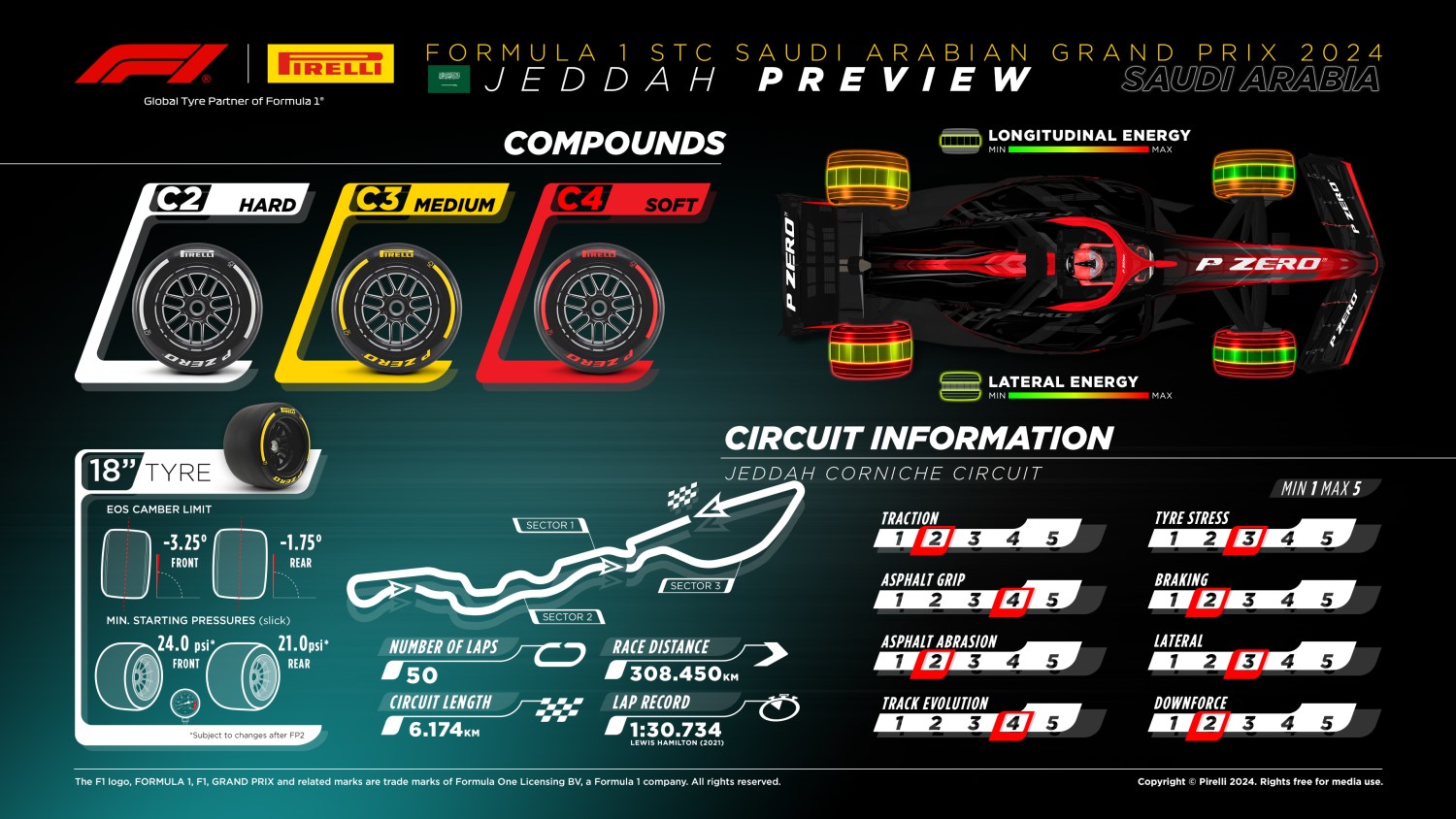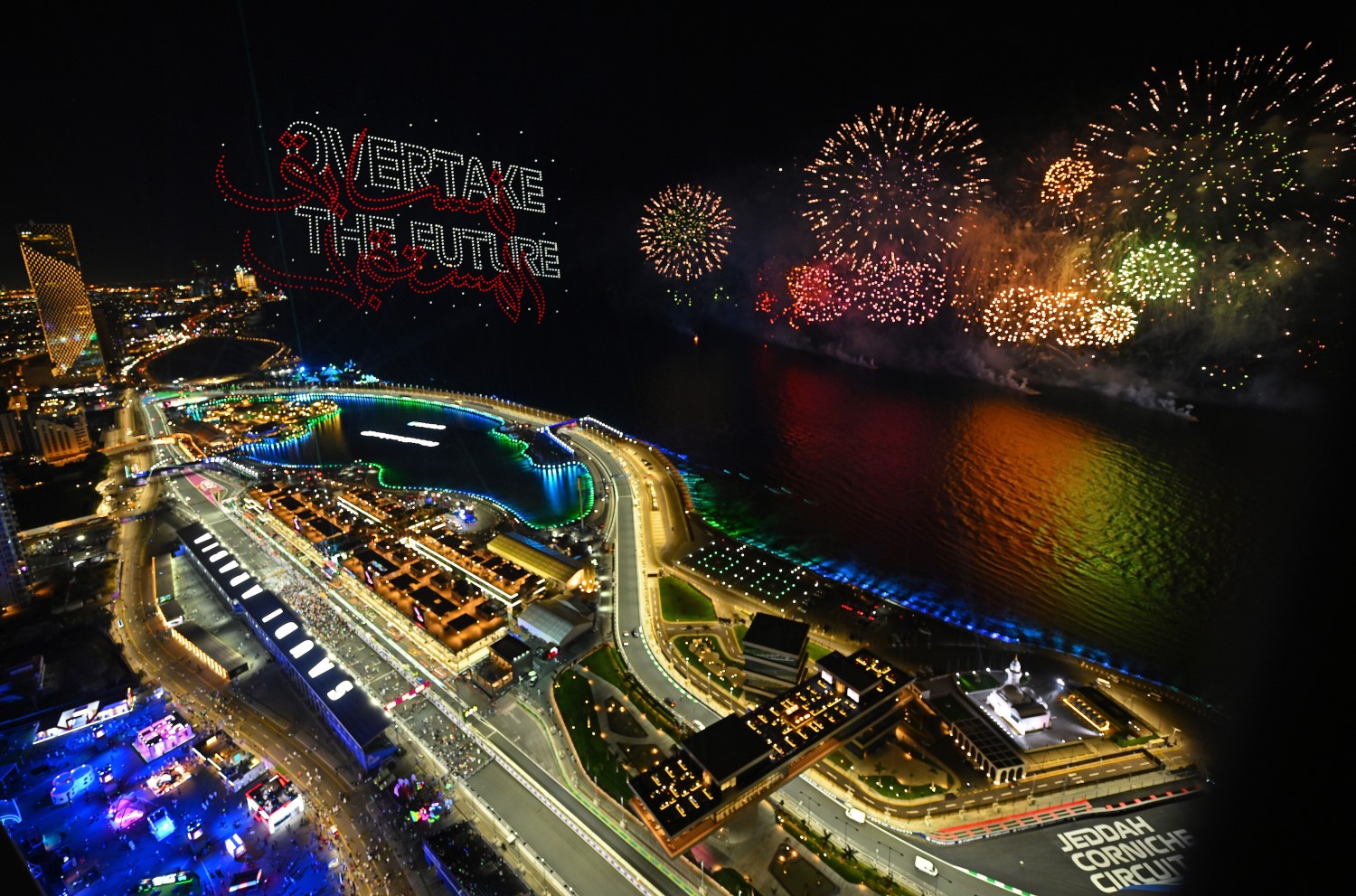Formula 1 News: 2024 Saudi Arabian GP Preview
The 2024 F1 schedule will continue with Round 2, the Saudi Arabian Grand Prix, at the Jeddah Corniche Circuit this coming Saturday.
Jeddah Corniche Circuit remains in its infancy, but it has already established itself as a challenging venue. Stretching out across 6.1km adjacent to the Red Sea, it is among Formula 1’s fastest circuits, with the spectacle heightened by the close proximity of the unforgiving walls.
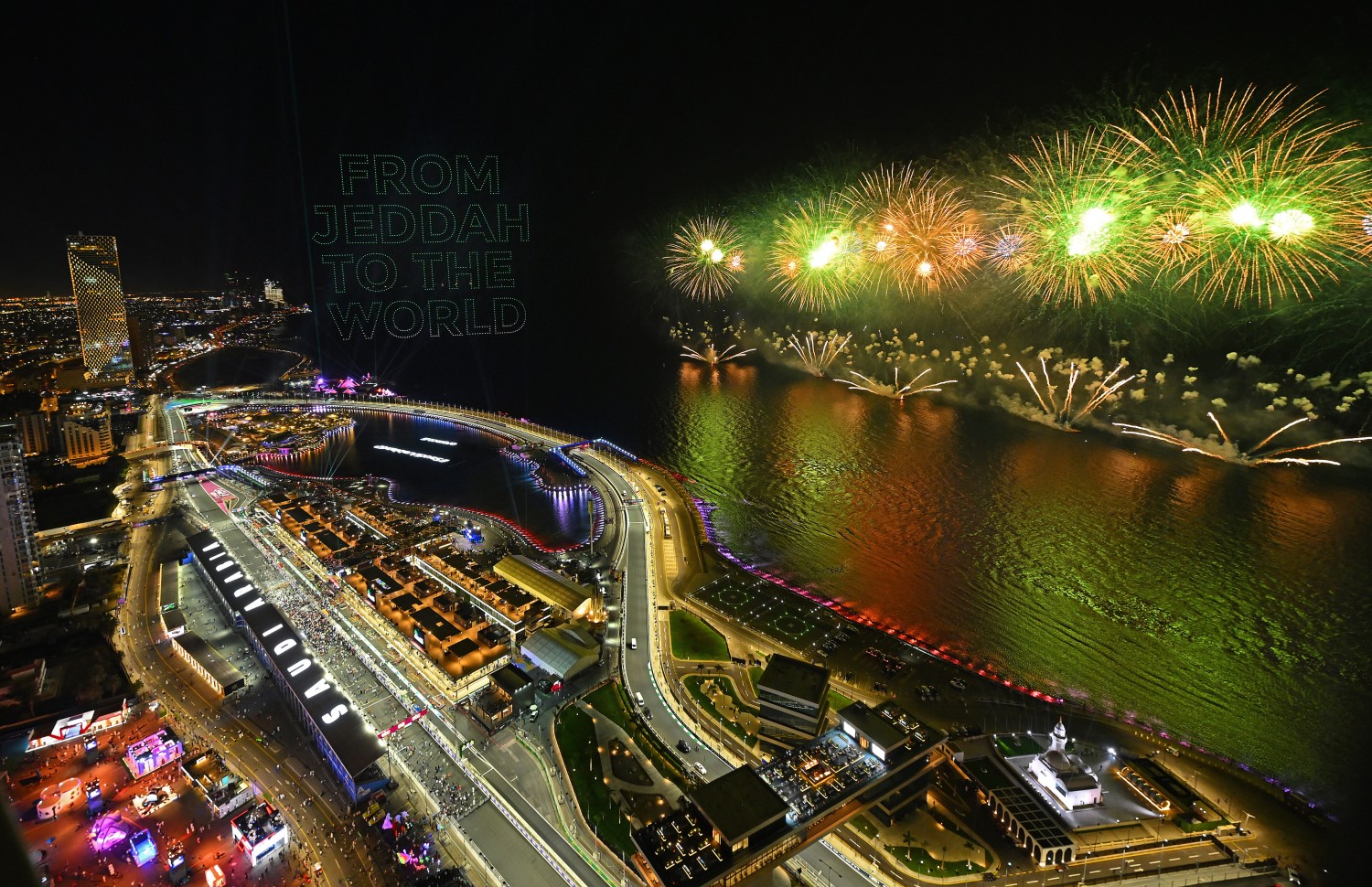
The second race of the season takes place at the Jeddah Corniche Circuit, billed as “the fastest street circuit in the world.” It has 27 corners, the highest number of any track on the calendar and is 6.1 kilometers-long, also making it the longest street circuit in Formula 1. Even though it is a temporary facility, some parts of the track, along the Jeddah seafront, are permanent.
Teams now face the challenge of quickly adapting the car to the Jeddah Corniche Circuit, which is much more sensitive to drag than Bahrain. There are a couple of tricky corners on the circuit, which seriously test the car and drivers. With each lap being in excess of 3.6 miles, there are few opportunities to practice these corners before the Qualifying session.
The key sessions take place in the evening, and teams will need to be mindful of the changes to wind and temperature following the sunset. The track surface is much smoother than in Bahrain, and Pirelli have provided softer tire compounds for this event.
There are a lot of consequences for going over the limit, and getting close to the limit is harder than going to other tracks with run-off.”
The infrequent use of the Jeddah Corniche Circuit means track evolution through the grand prix weekend is likely to be high, while teams and drivers must also be mindful of the changing track temperature in qualifying and the race, which both begin beneath the lights at 20:00 local time.
The track features a mix of long wide corners taken at very high speeds and narrow, twisty sections, meaning the drivers are kept very busy. The track surface provides a decent level of grip, but without being too abrasive. One can rely on the track conditions evolving considerably over the weekend, with a one-stop tire strategy being the most likely.
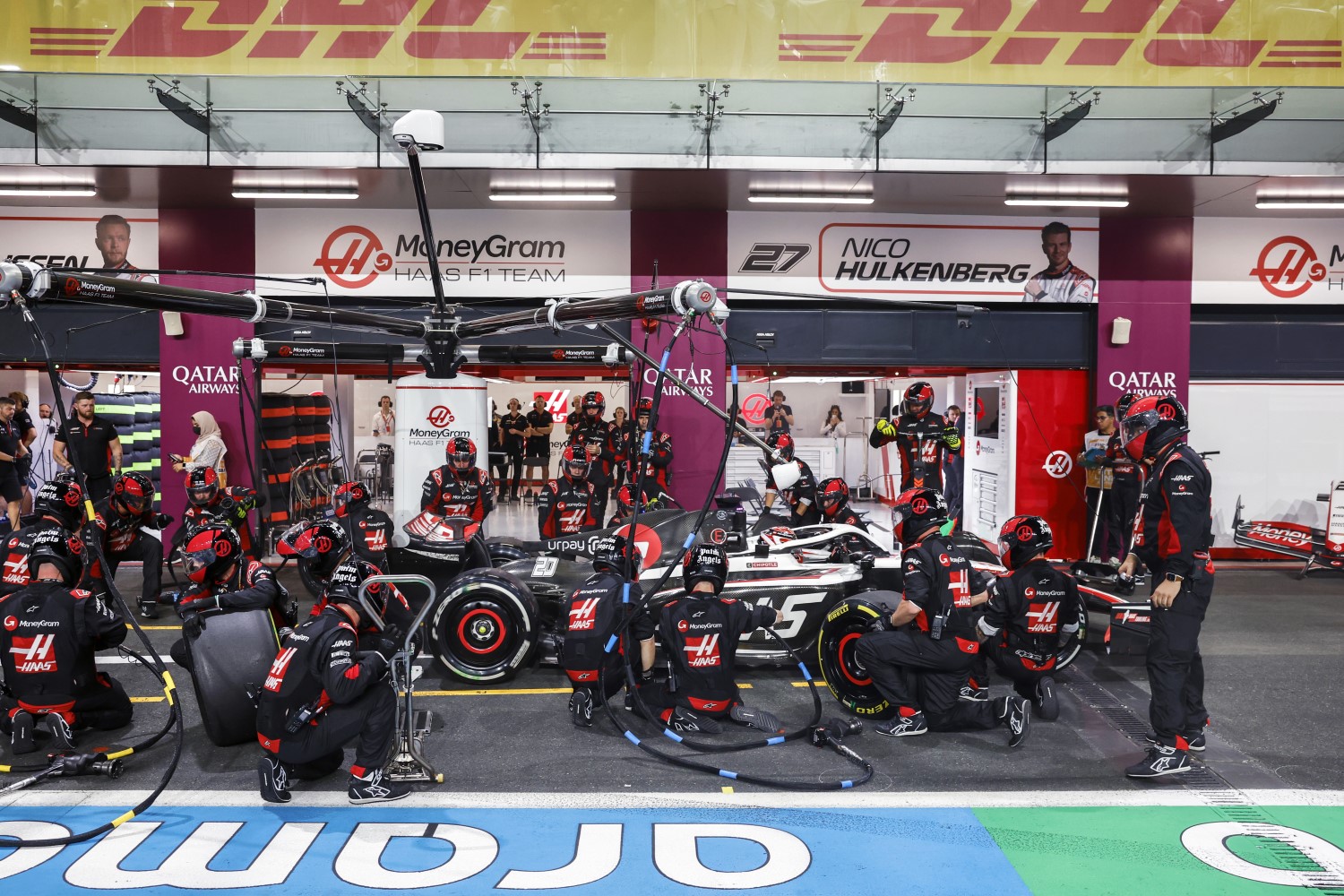
Between two realms
Formula One is a sport on the move. The whole organization made an art of the camping and decamping from one corner of the globe to the other, looking for a new destination, a new race, a new thrill: doing it in an efficient, effective and sustainable way is a science in itself.
It’s not just cars, garages and equipment that are needed across the world, but everything from kitchen appliances, plates and cutlery to crates of notebooks, teddy bears and other team items for guests and fans. The logistical feats required to make this show happen are as much an impressive watch as that given by the cars on track; and the men and women making it happen are some of the unsung heroes of this sport.
Not unlike a travelling circus, Formula One is a massive family that moves from one place to the other: sometimes different, often similar, always interesting.
Fact File: Saudi Arabian Grand Prix
- The Saudi Arabian Grand Prix is held on the Jeddah Corniche Circuit, located in a waterfront area next to the Red Sea.
- The location presents similar challenges to Abu Dhabi with sand blowing onto the track and changes in wind direction from day to night.
- The Jeddah Corniche Circuit has the most corners of any track on the F1 calendar with 27: 16 left and 11 right.
- It is also the second-longest track we visit at 6.174km. Energy management across the lap is therefore tricky and puts more focus on the MGU-H and hybrid system performance.
- With numerous long straights, drivers spend over 70% of the lap at full throttle and the circuit is ranked third in terms of time spent, and distance covered, using this metric.
- There are six braking events across the lap with two of those designated as ‘heavy’.
- Turn 13 has a 12% gradient, with banked corners opening up more lines and helping to build momentum onto the next sweeping, high-speed section.
- Turn 2 is the slowest corner on the circuit, taken around 80 km/h, whilst the quickest are Turns 20, 21, and 26 which are taken at close to or over 300 km/h.
- Sensitivity, which describes where you find lap time, is biased very strongly towards high-speed corner performance.
- Owing to its nature as a street circuit, Jeddah has a high risk of incidents leading to Safety Cars. Across the three previous races in Saudi Arabia, there have been four full Safety Car periods, and two red flags.
- Several track changes were made for the 2023 race in order “to deliver smoother, safer, and even more exciting racing.”
- These included:
- ‘Rumble Lines’ – which cause traction to be lost and thus slowing cars down were added at Turns 3, 14, 19, 20, and 21.
- Steel kerbs replaced bevelled kerbs at Turns 4, 8, 10, 11, 17, and 23.
- Driver sightlines were improved with the fence wall moved back at Turns 14 and 20 by 7.5m and 5m respectively.
- The fence wall at Turns 8 and 10 was also adjusted to improve visibility of the corner ahead.
- Turns 22 and 23 were amended with the fence at Turn 23 adjusted and a bevelled kerb added – that helped reduce speeds by approximately 50 km/h
- This is the fourth Saudi Arabian Grand Prix, there have been three different winners from the first three editions of the event – Lewis Hamilton, Max Verstappen, and Sergio Perez.
- Lewis’ 103rd and most recent victory was in Jeddah in 2021.
- The Saudi Arabian Grand Prix first appeared on the calendar as the penultimate race of the season in 2021, but has been the second race on the calendar for the last two seasons.
- This will be the 42nd Formula One Grand Prix to be held in the Middle East.
-
-

DRS zones. There are three DRS zones: between turns 20 and 22; between 24 and 27 and on the start-finish straight, which means there are plenty of overtaking opportunities, unusual for a street circuit.
Race Insight
Race interruptions: With its fast nature and walls in close proximity, there has unsurprisingly been no shortage of interruptions in the Saudi Arabian Grand Prix’s short history. The inaugural race featured two red flags and four Virtual Safety Cars. 2022’s event had just one Safety Car and two VSCs. 2023 featured one Virtual Safety Car and one Full Safety Car deployment.
Strategy: The C2, C3 and C4 compounds, which were used last year, return and are a step softer than the trio of tire options featured in Bahrain. Strategy is often dictated by incidents in the race, meaning teams need to be prepared for late calls into the pits for a change of tires.
Overtaking: While Jeddah Corniche Circuit features 27 corners, more than any other circuit on the calendar, there are just two significant overtaking opportunities. Turns One and 27 account for 89 percent of all passes to date. A short run to T1 at the start limits opening lap overtaking.
Defending Race Winner: Sergio Perez converted pole position into victory at the Saudi Arabian Grand Prix as teammate Max Verstappen recovered from P15 to make it successive one-two finishes for Red Bull.
Unlocking the Lap
The opening sequence, Turns One and Two, is a tight left-right chicane that sets up the rhythm for the following sweeping corners. It is also where some of the overtakes in the race will occur. Getting this opening sequence right is crucial to mastering the first sector of the lap.
Turn 13 is a long, banked turn that is very easy to get wrong. It invites drivers to take more speed into the corner due to its camber, but the wall on the exit is equally as much of a deterrent. Another sequence of fast, sweeping corners follows, as well as the first of three DRS detection points.
No circuit on the calendar has more corners than Jeddah and Turn 27 – the final corner – concludes the tricky lap. It’s another big overtaking opportunity, but this turn is deceptively tight. A DRS detection point precedes the corner itself, so drivers can play tactical games to try to ensure they have DRS on the run to Turn One.

Defending Race Winner’s View – Sergio Perez
I am looking forward to heading to Jeddah this weekend after such a good Team result in Bahrain. Things weren’t totally perfect in the first race and there is plenty of evolution to be done with the car, but we have a good base to work from now. There is always plenty of action at this race, and it could be a really tight one. Last year I had a great win and would love to repeat it.
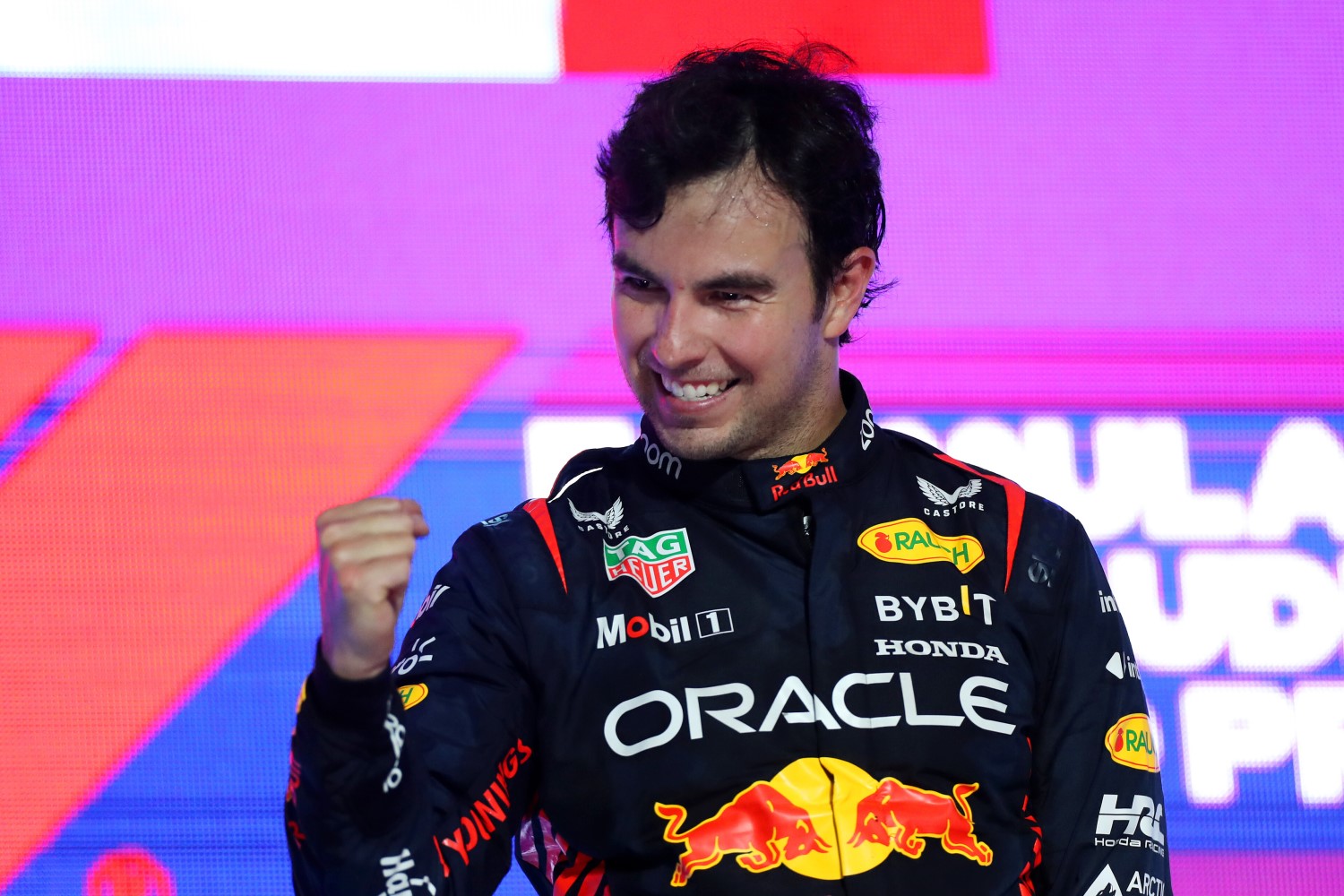
Saudi Arabian GP Weather Forecast
Thursday
Thursday’s practice sessions are set to be a warm and dry affair, as expected. Temperatures will likely be over 30 degrees Celsius in FP1, before cooling down to around 25 degrees for the second session, which begins in the evening local time.
Wind gusts of up to 33mph throughout the day could cause some problems for the cars out on track, however.
Friday
Friday sees much of the same, with FP3 facing temperatures of around 29 degrees, before cooling to the mid-twenties for qualifying.
Humidity levels of up to 50 per cent will make things a little sticky in the cockpits, particularly as the sun goes down for qualifying, while wind gusts will remain high for both FP3 and qualifying.
Saturday
Similar to the previous two days, race day should see temperatures range between 25 and 27 degrees Celsius, as the cars are out on track.
The humidity will remain around the same on Saturday evening local time compared to qualifying, but we should get a much calmer picture in terms of the wind, providing some relief from the otherwise windy weekend.
Saudi Arabian GP Tires
At 6.174 kilometers in length, it is the second longest track on the calendar, particularly twisty with 27 corners, the most of any circuit and on Saturday the drivers will tackle it 50 times. The fact that many of the turns are medium to high speed means the tires are subjected to high lateral forces. As in Bahrain, qualifying and the race take place in the evening, starting at 20.00 local time, with temperatures that are therefore lower than during the first free practice sessions on Thursday and Friday.
Based on the experience of the previous three editions of this race, Pirelli has chosen its three mid-range compounds: the C2 as Hard, the C3 as Medium and the C4 as Soft. Another difference when compared to Bahrain is race strategy. Last Saturday, the overwhelming majority of drivers made two stops, with a three-stopper the only other likely choice. However, in Jeddah, it is quite possible to envisage a one-stop race, with drivers swapping between Medium and Hard depending on their grid positions. As this is a street circuit, there are not many run-off areas and so the risk of accidents is quite high, as is therefore the chance of seeing the Safety Car on track or even having the race red-flagged. Overtaking is pretty tricky, with the best opportunity coming on the entry to turn 1.
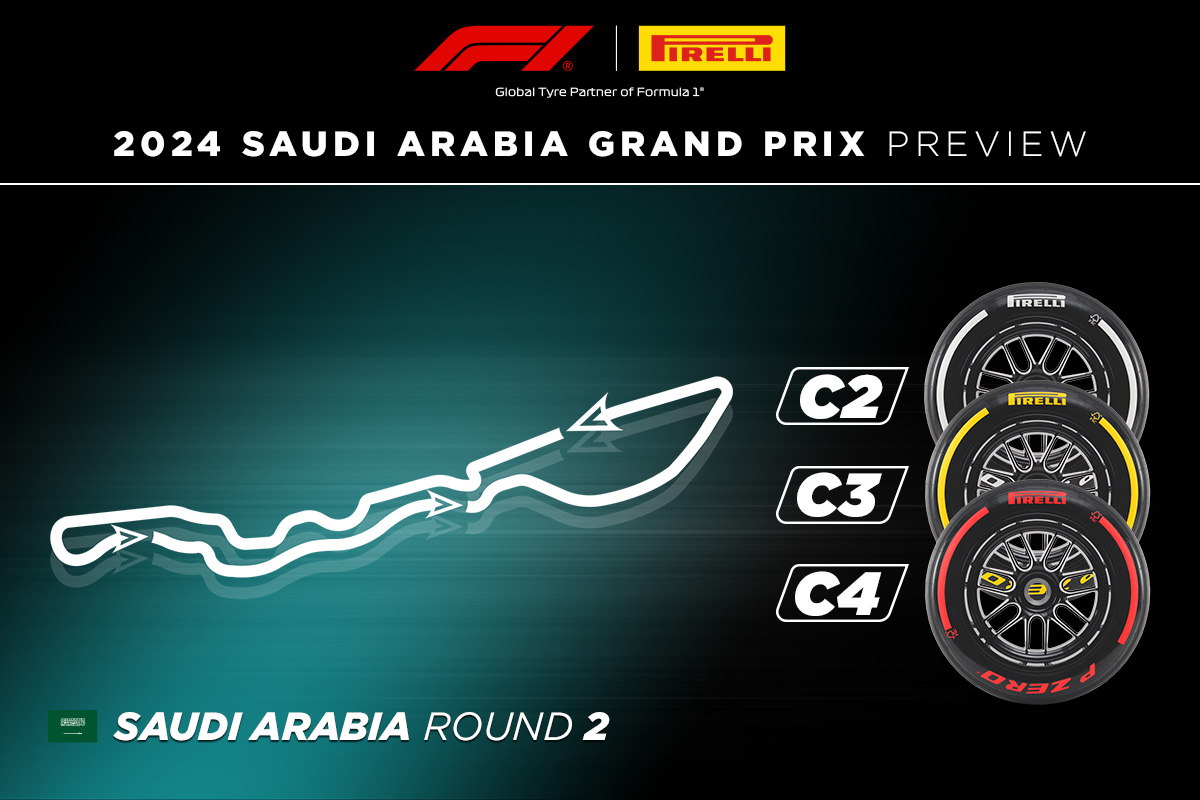
As is usually the case at street circuits, track evolution will be very high and in qualifying, it will be crucial to choose exactly the right moment to go out on track to set a good lap time and also important will be getting the preparation lap just right. In past events here, we have even seen drivers doing two preparation laps to get the Softs to the right temperature and that can cause traffic related problems.
Apart from the usual support race in the shape of the second round of the Formula 2 championship, the Jeddah circuit also hosts the F1 Academy for the first of its seven rounds this season, all run alongside a Grand Prix event. For the second consecutive year, Pirelli is the Official Tire Supplier for the all-female championship. The company thus strengthens its support for young drivers on their career ladders by broadening the scope of opportunities available to them so that, as has already been the case in the past, some drivers could make the way to the top of their specialist field having always and exclusively raced on Pirelli tires.
All the F1 Academy cars are shod with 13 inch Pirelli P Zero DM, the same as last season and in all Formula 4 series where Pirelli is the supplier. The P Zero DM is designed to maintain a constant performance level even over longer distances so that racing drivers can develop their skills without having to deal with variables usually found in major championships relating to tire wear. Each driver will have 14 dry tires (three and a half sets) and 8 rain tires (two sets) per race weekend.
There are a couple of interesting points relating to this year’s series. The fastest driver in qualifying will be presented with the Pirelli Pole Position Award, a miniature version of a P Zero tire, just like the one presented to the Formula 1 pole sitter. The drivers celebrating on the podium will wear the classic Pirelli podium cap, but in a special for this series purple colored limited edition.
Furthermore, as from this year, the F1 Academy is ranked as a genuine junior category, as the top five drivers in the championship will be awarded points towards an FIA Superlicense. At each round, a different local driver will get the chance to race, through a Wild Card scheme.
THE TIRES ON TRACK
